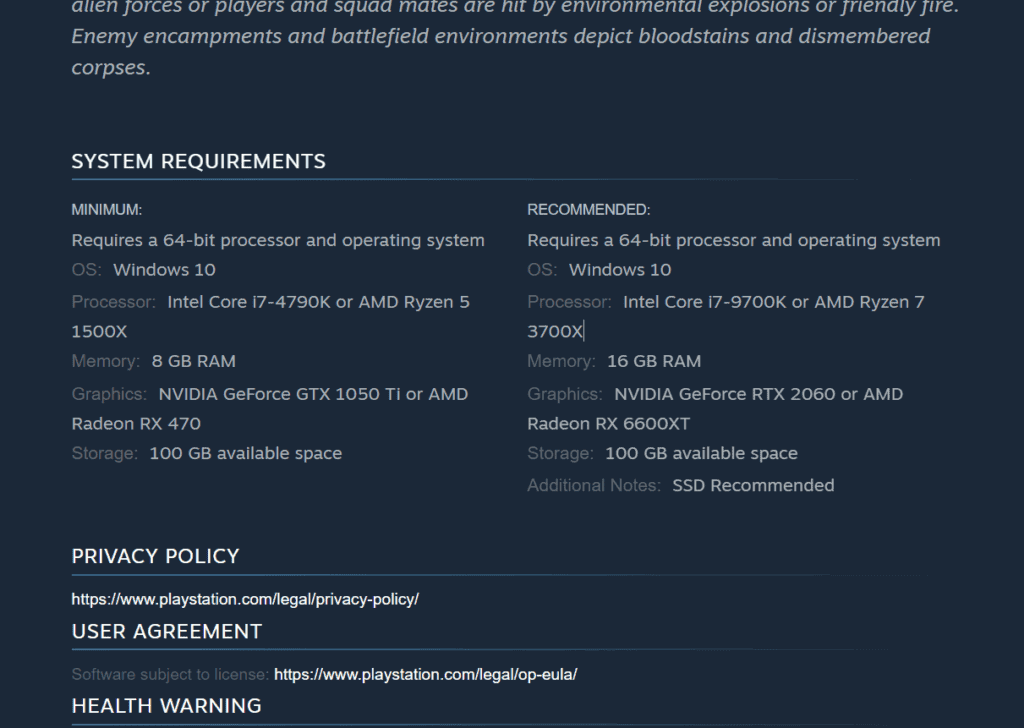
System requirements, or hardware requirements, are critical for making sure software runs properly on a computer. These are the specs that a device must meet or exceed for software or an application to function. If the system does not meet these requirements, the software may not run at all or could perform poorly.
Meeting the minimum requirements ensures that a program can run, but for a better experience, it is wise to aim for recommended or optimal specifications. Companies often publish a set of requirements that detail what hardware is necessary to take full advantage of their software’s capabilities.

Understanding System Requirements for Optimal Performance
System requirements are the essential hardware and software specifications needed to run software or games properly. Understanding these requirements is crucial to ensure a smooth and optimal user experience.
Types of System Requirements
- Minimum Requirements: Think of these as the bare essentials. Your device should at least meet these requirements to run the software, but it might not run well.
- Recommended Requirements: These target an optimal experience. Meeting (or exceeding) these specifications generally means smooth performance with good graphics quality.
Key Components in System Requirements
| Component | Description |
|---|---|
| Operating System | The base software your computer runs on (e.g., Windows 10, macOS, Linux) |
| Processor (CPU) | The ‘brain’ of your computer, responsible for calculations and processing instructions |
| Memory (RAM) | Temporarily stores data the computer is actively using |
| Graphics (GPU) | Handles image and video rendering, especially important for games and video editing software |
| Storage | Where long-term data is stored, such as programs, files, and the operating system itself (hard drive or SSD) |
Why System Requirements Matter
- Performance: Your computer needs enough power to run software without lag or crashes. Meeting recommended requirements leads to a more satisfying experience.
- Compatibility: Sometimes a program requires a specific operating system or certain hardware features to function correctly.
- User Experience: With inadequate hardware, software will run slowly or with reduced visual quality, hindering your ability to use it effectively.
Example: Game System Requirements Table
Often, games clearly list their system requirements. Here’s a simple example:
| Component | Minimum Requirement | Recommended Requirement |
|---|---|---|
| Operating System | Windows 10 64-bit | Windows 10 64-bit |
| Processor (CPU) | Intel Core i5-8400 | Intel Core i7-8700 |
| Memory (RAM) | 8 GB | 16 GB |
| Graphics (GPU) | NVIDIA GeForce GTX 1060 | NVIDIA GeForce GTX 1080 |
| Storage | 50 GB free space on Hard Drive | 50 GB free space on SSD |
Finding System Requirements
Software and games usually outline their requirements:
- Product Websites or Packaging: Look for specifications or system requirements sections.
- Online Stores: Many digital retailers display this information on product pages.
Knowing your computer’s own specifications helps you compare them to a program’s system requirements. You can find these specifications on your computer through settings or using system information tools.
Key Takeaways
- System requirements are the minimum specs necessary for software to function.
- Optimal performance depends on meeting or exceeding these specifications.
- Recommended requirements offer a balance between minimum specs and optimal performance.
Understanding System and Hardware Requirements
When choosing software, it’s crucial to know if your computer can handle it. Here’s how to understand system and hardware requirements.
Defining System Requirements
System requirements refer to the specific configuration that software needs to operate effectively on a computer. These requirements ensure that a piece of software, whether it’s an application or an operating system, will run smoothly. They outline the minimum and sometimes the recommended setups for optimal performance.
Components of System Requirements
Hardware requirements are critical components to consider. They consist of:
- CPU (Central Processing Unit): Dictates the processing power needed.
- Memory (Random Access Memory or RAM): The amount of memory required for the software to run efficiently.
- Storage: How much disk space the software will occupy.
- Peripherals: Additional devices like printers or scanners that are necessary.
- Drivers: Software pieces that allow the operating system to talk to the hardware.
Software compatibility is also essential, ensuring the software can work with the existing operating system and other installed applications.
Categories of System Requirements
System requirements are often listed in two key categories:
- Minimum system requirements: The least powerful setup that will still allow the software to run.
- Recommended system requirements: A stronger setup that ensures better performance and a more seamless experience.
Understanding these requirements helps avoid compatibility issues, prevent crashes, and ensure that the chosen software performs as expected.
Achieving Optimal System Performance
To ensure software runs smoothly, matching system requirements with hardware is crucial. System performance hinges on this alignment.
Impact on Performance and Usability
If hardware does not meet software requirements, users face slow performance and frequent crashes. Software needs specific processor speeds, memory, and graphics capabilities to function well. Modern applications, especially updates, may need more power to maintain performance levels. Compatibility with the latest operating system versions is also vital to keep software running without a hitch.
Key Points:
- Match hardware to software needs to avoid slow performance.
- Regular updates may increase system demands.
- Check compatibility with current operating systems like Windows.
Importance of System Requirements for Software Updates
Updates can add features that demand more from your hardware. It’s important to review the system requirements for each major software update. This way, you guard against degraded performance. Checking requirements before updating ensures optimal performance and prevents potential issues.
Key Points:
- Updates may lead to higher system demands.
- Review new requirements to keep software running smoothly.
Frequently Asked Questions
This section answers common questions about system requirements and hardware requirements.
How do software engineering practices define system requirements?
In software engineering, system requirements outline what a program needs to run. This includes specifics about the hardware and software environment.
What are some typical examples of system requirements for a software application?
Software applications often need a certain type of processor, amount of RAM, graphics card, and storage space. These ensure the app runs smoothly.
What constitutes adequate system requirements for running an operating system?
To run an operating system, the computer must have a compatible processor, sufficient RAM, and a hard drive with enough space. Graphics requirements may also apply.
What are the distinctions between hardware and software system requirements?
Hardware requirements are physical components like a CPU or hard drive. Software requirements relate to the operating system and compatible programs needed.
What are the recommended hardware specifications to support project management software?
Project management software typically requires a multi-core processor, ample RAM, and enough storage to manage multiple projects and databases efficiently.
How can one determine if the hardware specifications meet the necessary system requirements for a given task?
You can compare your computer’s specifications with the software’s published requirements. Tools are available to assess compatibility and performance.






